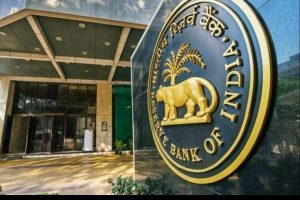Ongoing Disinflation : RBI

Reserve Bank of India (RBI) governor recently said recurring food price shocks and renewed flash points on the geo-political front pose a challenge to the ongoing disinflation process.
- Disinflation is a decrease in inflation rates.
- A decline in the rate of increase in the general price level of goods and services in the gross domestic product (GDP) of a country over time is called disinflation.
- Unlike inflation and deflation, which refer to the direction of prices, disinflation refers to the rate of change in the rate of inflation.
- Disinflation is not considered problematic because prices do not actually drop, and disinflation does not usually signal the onset of a slowing economy.
- A healthy amount of disinflation is necessary since it represents economic contraction and prevents the economy from overheating.
- Disinflation is considered the opposite of reflation, which occurs when a government stimulates an economy by increasing the money supply.
- Cause of Disinflation:
- If a central bank wants to enforce a tighter monetary policy and the government starts selling off some of its assets, the supply of money in the economy could be limited, causing a disinflationary effect.




